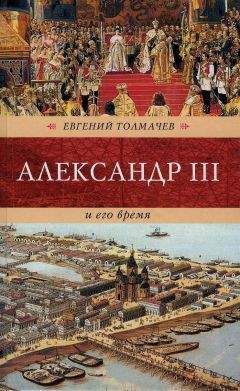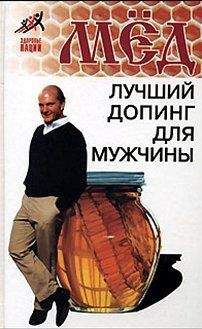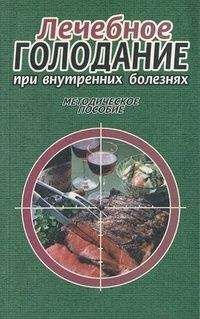Пол Холмс - Внутренний мир снаружи: Теория объектных отношений и психодрама
Moreno, J. L. (1946 and 1977) Psychodrama, Vol. 1, Beacon, NY: Beacon House.
Moreno, J. L. (1947) The Theatre of Spontaneity, Ambler, PA: Beacon House.
Moreno, J. L. (1951) Sociometry, Experimental Method and the Science of Society, Ambler, PA: Beacon House, The Horsham Foundation.
Moreno, J. L. (1955) Preludes to My Autobiography, Beacon, NY: Beacon House.
Moreno, J. L. with Moreno, Z. (1959 and 1975) Psychodrama, Vol. 2, Beacon, NY: Beacon House.
Moreno, J. L. (1967) The Psychodrama of Sigmund Freud, Beacon, NY: Beacon House.
Moreno, J. L. with Moreno, Z. (1969) Psychodrama, Vol. 3, Beacon, NY: Beacon House.
Moreno, J. L. (1989) ‘Autobiography’, Journal of Group Psychotherapy, Psychodrama and Sociometry, 42 (1 & 2): 1 – 125.
Moreno, Z. (1991) ‘Time, space, reality and the family: psychodrama with a blended (reconstituted) family’, in P. Holmes and M. Karp (edsj Psychodrama: Inspiration and Technique, London: Tavistock/Routledge.
Moses, R. (1988) ‘Projection, identification and projective identification: their relationship to political process’, in J. Sandier (ed.) Projection, Identification and Projective Identification, London: Karnac.
Peris, S. F, Hefferline, R. F. and Goodman, P. (1951) Gestalt Therapy, Harmondsworth: Penguin.
Pines, M. (1983) The Evolution of Group Analysis, London: Routledge & Kegan Paul.
Pines, M. (1985) Bum and Group Psychotherapy, London: Routledge & Kegan Paul.
Pines, M. (1987) ‘Psychoanalysis, psychodrama and group psychotherapy: stepchildren of Vienna’, Journal of the British Psychodrama Association, 2 (2): 15–23.
Pocket Oxford Dictionary (1924) Oxford: Oxford University Press.
Pope, H. G., Jonas, J. M., Hudson, J. L, Cohen, B. M., and Gunderson, J. G. (1983) «The validity of DSM III borderline personality disorder: a phenomenologic, family history, treatment response and long term follow up study’, Archives of General Psychiatry 40: 23–30.
Post, F. (1962) The Significance of Affective Symptoms in Old Age, Maudsley Monograph, London: Oxford University Press.
Racker, H. (1968) Transference and Countertransference, London: Maresfield Reprint.
Reich, A. (1951)’On countertramference’, International Journal of Psycho—Analysis 43: 25–31.
Rogers, C. R. (1970) Encounter Groups, Harmondsworth: Pelican.
Rolfe, Fr. (Baron Corvo F.) (1904) Hadrian the Seventh, London: Chatto & Win–dus.
Rolfe, F. (Baron Corvo) (1934 and 1986) The Desire and Pursuit of the Wfiole: A Romance of Modem Venice, Oxford & New York: Oxford University Press.
Rolfe, F. (Baron Corvo) (1974a) The Armed Hands: and Other Stories and Pieces, London: Cecil & Amelia Woolf.
Rolfe, F. (Baron Corvo) (1974b) The Venice Letters, London: Cecil & Amelia Woolf.
Rutter, M., Maughan, B., Mortimore, P., Ouston, J. and Smith, A. (1979) Fifteen Thousand Hours: Secondary Schools and their Effects on Children, London: Open Books; Cambridge, MA: Harvard University Press.
Rycroft, C. (1968) A Critical Dictionary of Psychoanalysis, Harmondsworth: Penguin.
Sandler, J. (1976) ‘Countertransference and role–responsiveness’, International Review of Psycho—Analysis, 3: 43–7.
Sandler, J. (1987) ‘The concept of projective identification,’ Bulletin of the Anna Freud Centre, 10: 33–49.
Sandler, J. (ed.) (1988) Projection, Identification, and Projective Identification, London: Karnac.
Sandler, J., Dare, C. and Holder, A. (1973,1 The Patient and the Analyst: The Basis of the Psychoanalytic Process, London: Maresfield Reprints.
Sandler, J. and Rosenblatt, B. (1962) ‘The concept of the representational world’, Psychoanalytic Studies of the Child 17:128–62.
Sandler, J. and Sandler, A-M. (1978) ‘On the development of object relationships and affects’, International Journal of Psycho—Analysis 59: 285–96.
Scheff, T. J. (1979) Catharsis in Healing, Ritual and Drama, Berkeley & Los Angeles: University of California Press.
Segal, H. (19649 Introduction to the Work of Melanie Klein, London: Hogarth Press.
Segal, H. (1979) Klein, London: Fontana/Collins.
Shepherd, M. (1985) Sherlock Holmes and the Case of Dr Freud, London: Tavistock.
Skynner, A. R.C. (1976) One Flesh Separate Persons: Principles of Family and Marital Psychotherapy, London: Constable.
Slade, P. (1976) ‘Hallucinations’, Psychological Medicine, 6: 7–13.
Stafford‑Clark, D. (1965) What Freud Really Said, London: Penguin.
Starr, A. (1977) Psychodrama: Rehearsal for Living, Chicago: Nelson Hall.
Stem, D. (1985) The Interpersonal World of the Infant: A View from Psychoanalysis and Developmental Psychology, New York: Basic Books.
Stern, D. (1991) Diary of a Baby: Whatyour Child Sees, Feels, and Experiences, London: Fontana.
Stoddart, M. (1990) The Scented Ape: The Biology and Culture of Human Odour, Cambridge: Cambridge University Press.
Strachey, J. (1933 and 1959) ‘The nature of the therapeutic action of psychoanalysis’, International Journal of Psycho—Analysis, 50: 257–92.
Sutherland, S. (1991) ‘Growing pains. A review of Human Change Processes: The Scientific Foundations of Psychotherapy by Michael J. Mahoney’, Nature 350, 14 March.
Symons, A. J.A. (1934) The Quest for Corvo: An Experiment in Biography, Harmondsworth: Penguin.
Watzlawick, P. (1974) Change: Principles of Problem Formation and Problem Resolution, London and New York: Norton.
Webster, Dr N. (1864) Complete Dictionary of the English Language, revised by C. A. Goodrich and N. Porter, London: Bell & Daldy.
Williams, A. (1989) The Passionate Technique: Strategic Psychodrama with Individuals, Families, and Groups, London: Tavistock/Routledge.
Williams, A. (1991) Forbidden Agendas: Strategic Action in Groups, London: Tavistock/Routledge.
Winnicott, D. W. (1958) Through paediatrics to psycho-analysis, London: Hogarth Press.
Winnicott, D. W. (1965) The Matuirational Processes and the Facilitating Environment, London: Hogarth Press.
Winnicott, D. W. (1971 and 1974) Playing and Reality, London: Tavistock; Harmondsworth: Pelican.
Wollheim, R. (1973) Freud, London: Fontana.
Wood, J. (1990) ‘The good Freud guide’, in Weekend Guardian 25–6 August 1990.
Woolf, C. (1974) Introduction to The Venice Letters of Fr. Rolfe, Baron Corvo, London: Cecil & Amelia Woolf.
Yablonsky, L. (1976) Psychodrama: Resolving Problems Through Role-Playing, New York: Gardener Press.
Yalom, I. D. (1985) The Theory and Practice of Group Psychotherapy, 3rd edition, New York: Basic Books.
Литература по психодраме
Blatner, Н. А. (1988) Acting‑In: Practical Applications of Psychodramatic Methods, New York: Springer.
Blatner, A. with Blatner, A. (1988) Foundations of Psychodrama: History, Theory, Practice, New York: Springer.
Fox, J. (ed.) (1987) The Essential Moreno: Writings on Psychodrama, Group Method and Spontaneity by J. L. Moreno MD, New York: Springer.
Goldman, E. E. and Morrison, D. S. (1984) Psychodrama: Experience and Process, Dubuque, IA: Kendall Hunt.
Holmes. P. and Karp, M. (1990) Psychodrama: Inspiration and Technique, London: Tavistock/Routledge.
Leveton, E. (1977) Psychodrama for the Timid Clinician, New York: Springer.
Marineau, R. (1989) Jacob Levy Moreno 1889–1974, London: Tavistock/Routledge.
Moreno, J. L. (1989) ‘Autobiography’, Journal of Group Psychotherapy, Psychodrama and Sociometry, 42 (1 & 2): 1 – 125.
Starr, A. (1977) Psychodrama: Rehearsal for Living, Chicago: Nelson Hall.
Williams, A. (1989) The Passionate Technique: Strategic Psychodrama with Individuals, Families, and Groups, London: Tavistock/Routledge.
Williams, A. (1991) Forbidden Agendas: Strategic Action in Groups, London: Tavistock/Routledge.
Yablonsky, L. (1976) Psychodrama: Resolving Problems Through Role-Playing, New York: Gardener Press.
Примечания
1
Английское слово «encounter» имеет значение «встреча, сопровождающаяся тесным контактом, иногда даже с оттенком столкновения». Такое понимание встречи было свойственно Морено. — Прим. переводчика.
2
В смысле «встреча, плотный контакт». — Прим. переводчика.
3
Глагол to dream («спать, видеть сны») можно перевести так же и как «мечтать» — человек, потерявший вкус к жизни, вновь оживает для нее. — Прим, переводчика.
4
Перевод Т. Щепкиной—Куперник.
5
С точки зрения Фрейда психический аппарат расчленен на три инстанции: Ид (Оно), Эго (Я) и Супер—Эго (Сверх-Я). Словарь по психоанализу Лапланша и Понталиса дает им следующее определение: «…Ид является полюсом влечений в личности; его содержания, связанные с психическим выражением влечений, бессознательны: они являются, с одной стороны, врожденными и наследуемыми, с другой — вытесненными и приобретенными. С точки зрения метафизики Фрейда, Ид — это первичный резервуар психической энергии; с точки зрения динамики, Ид находится в конфликте с Эго и Супер—Эго, которые, с точки зрения генетической, возникают, отпочковываясь из него….Эго зависит как от требований Ид, так и от императивов Супер—Эго и запросов реальности. Эго выступает защитником интересов личности в целом….Одна из точек зрения на генезис определяет Эго как приспособительный аппарат, отделившийся от Ид при контакте с внешней реальностью….Супер—Эго, по Фрейду, ответственно за нравственное сознание, самонаблюдение и формирование идеалов и по отношению к Эго играет роль судьи или цензора. — Прим. переводчика.
6
Часть сложных слов, имеющая значение «находящийся поверх чего–либо, возле чего–либо, следующий за чем–либо». — Прим. переводчика.
7
В смысле точное воспроизведение». — Прим. переводчика.
8
Проблема использования термина «перенос» детально рассматривается в книге Сандлера и др. «Пациент и психоаналитик» (М.: Смысл, 1995). — Прим, переводчика.
9
Английское self означает моя собственная личность, я сам; относящееся к самому себе. На протяжении всей книги слово self будет переводиться как «я» (строчная буква в кавычках). Читатель должен принять во внимание, что это допущение является условностью перевода, и «я» не совпадает с инстанцией Я из структурной модели Фрейда — Я, Оно, Сверх-Я (или Эго, Ид, Супер—Эго). — Прим. переводчика.
10
Перевод Е. Л. Михайловой.
11
Английское слово identity имеет, помимо прочих, значение подлинность. — Прим. переводчика.




